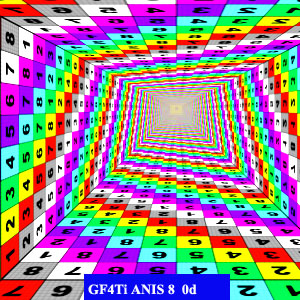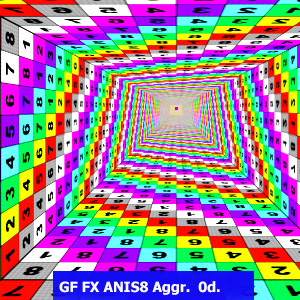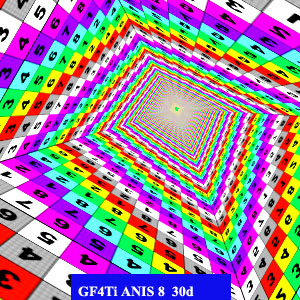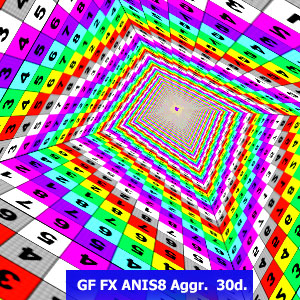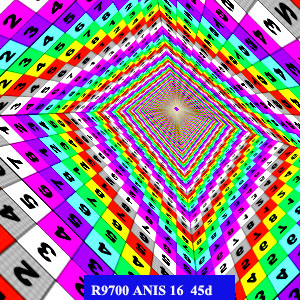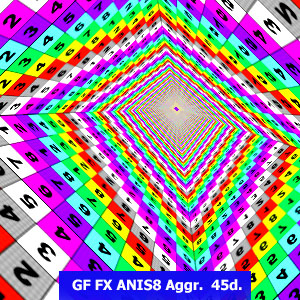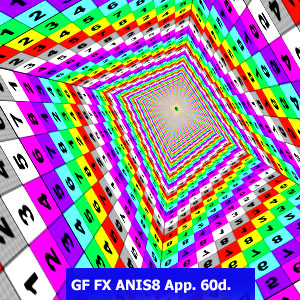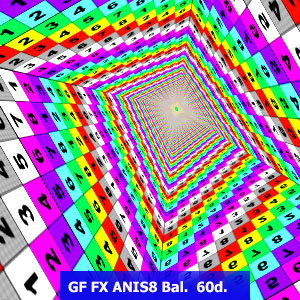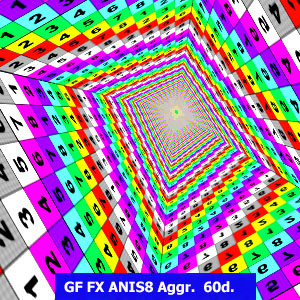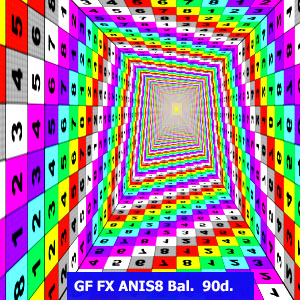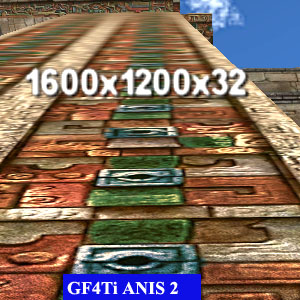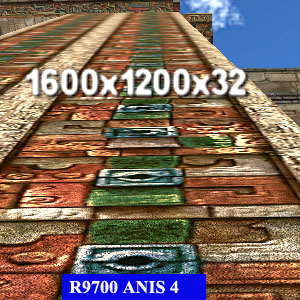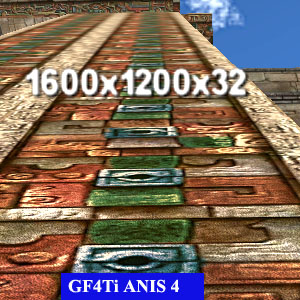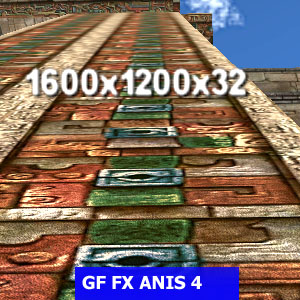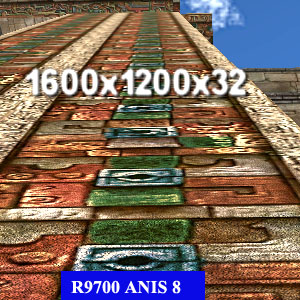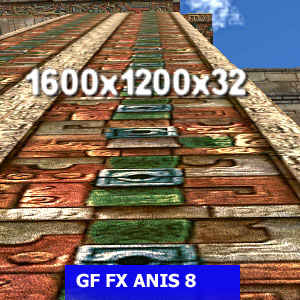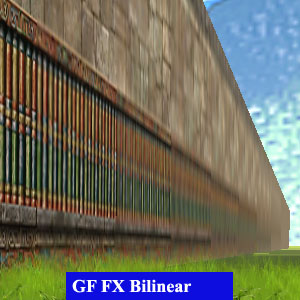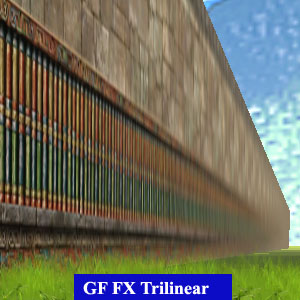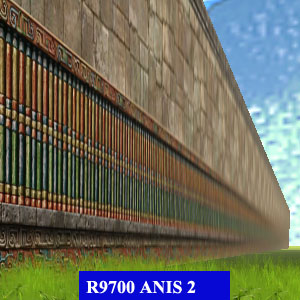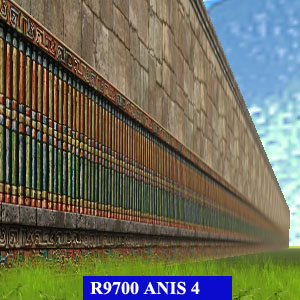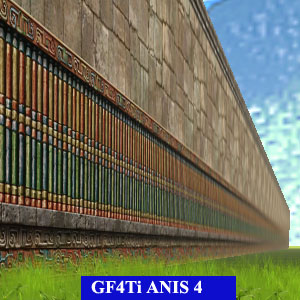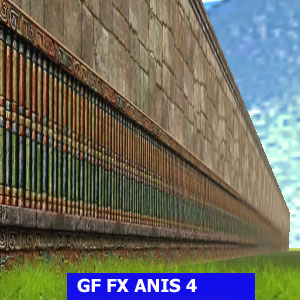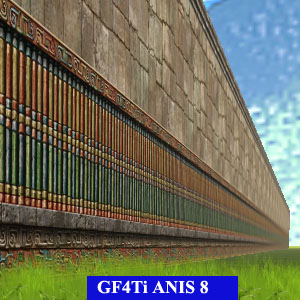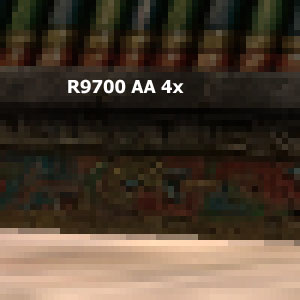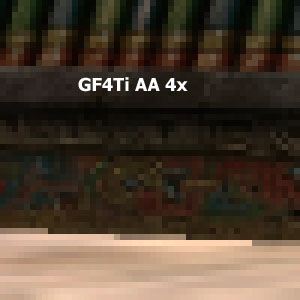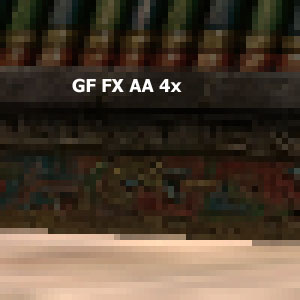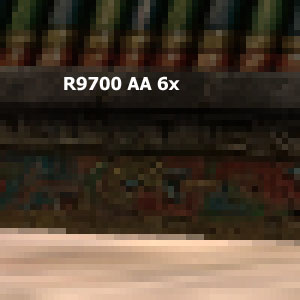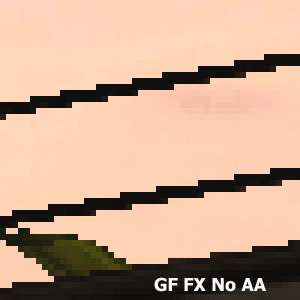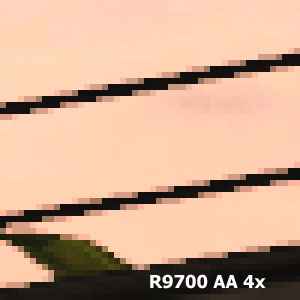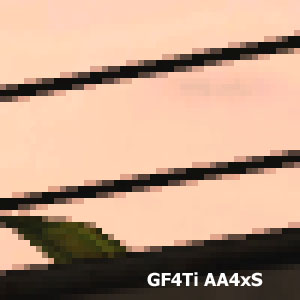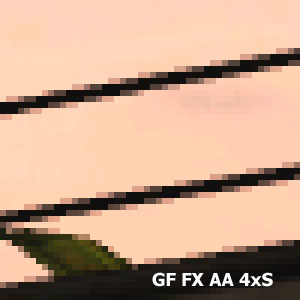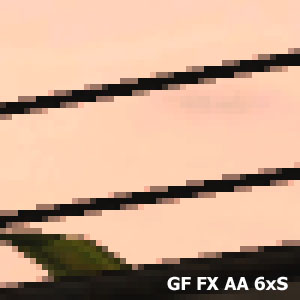So, what can we see?
-
Almost no quality difference between 4x and 6xS/8xS. So, why to pay more
for the same?
-
The R300 has higher AA4x quality than the NV30/NV25.
3D quality in general
In general, I have no complains. I just can show you the screenshots from
NFS:HP2 obtained with the NV30:


Only in case of AA 8xS there are artifacts like these:

I think it's the driver's fault again.
Conclusion
At last, we managed to test this so long-awaited NVIDIA's solution which
is the fastest and most flexible accelerator for today! However, the cards
are not available on the market, and it is possible that the GeForce FX
5800 Ultra will never come onto the scene (maybe only GeForce FX 5800 working
at lower frequencies and the slower RADEON 9700 PRO).
But the NV30 is a real step toward a very flexible programmable graphics
processor. The GeForce FX has its disadvantages which were mentioned above.
But they do not lay deep and I suggest that in the next chip versions of
the NV3X family (first of all, NV35) the errors of the NV30 will be done
away with. I have got information that the NV35 may arrive already in May.
Besides, we expecting the junior brothers - NV31/34 which will also include
all shader capabilities of the NV3X architecture.
-
It's the first time we are examining the card which may not arrive into
the retail market but which serves an an architectural base for a whole
family of products. The already tested execution units based on the .13
technology will let quickly make and launch a whole family of new chips
for various market niches.
-
The weakest point of the GeForce FX 5800 is the 128bit memory bus
because even such fast memory working at 500 (1000) MHz can't provide the
required throughput for the 500MHz 8-pipeline chip. It had a very bad effect
on the AA in spite of the frame buffer compression in MSAA modes. Such
compression is the de-facto standard for modern processors, and even with
this compression the throughput of the 128bit memory bus is not enough
for storing 4000 shaded pixels per second. As a result, the NV30 has a
lower speed in the AA mode than the R300 (which has both compression and
the 256bit memory bus). Besides, the MSAA algorithm's quality is much higher
in case of the R300.
-
We can't estimate whether the GeForce FX 5800 Ultra is able to cover the
expenses with sales because the final retail prices are unknown.
-
Another downside is a noisy cooler which can frighten users by unexpected
starts or pauses (when the rotation speed gets lower). Because of such
design a user has to sacrifice the first PCI slot. But this downside can
be dealt with, and there are already cards with cooling systems free of
shortcomings of the reference card.
-
So, despite the above weak points, this is the fastest 3D accelerator for
the beginning of 2003. In our 3Digest we will see how the NV30 works on
different driver versions and check quality and stability in games.
-
In this review we didn't touch on operation of the card with TV and DVD
playback, but in the nearest review on a production NV30 based card we
will make up for it.
Alexander Medvedev ( unclesam@ixbt.com)
Write a comment below. No registration needed!
|
|


